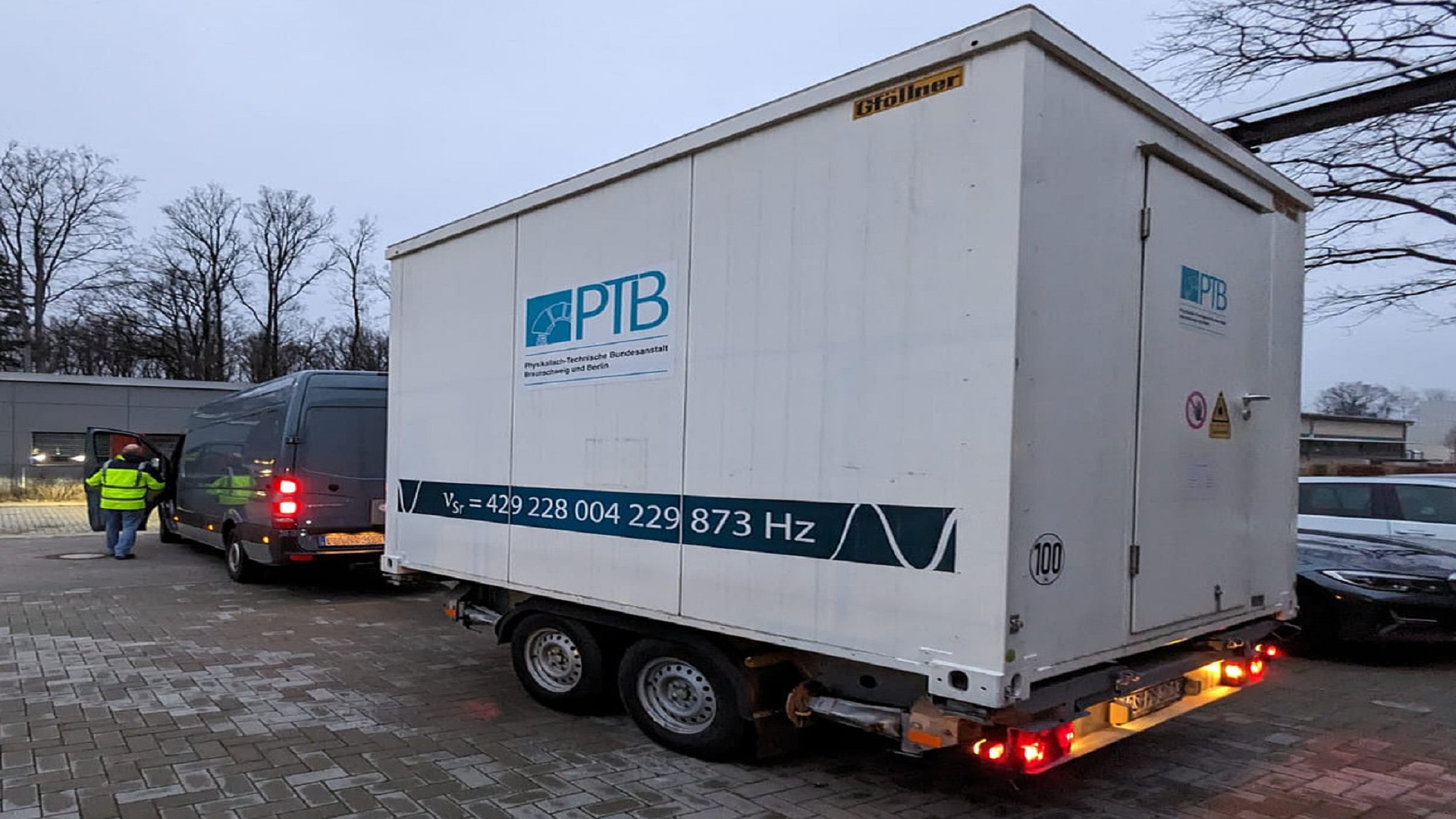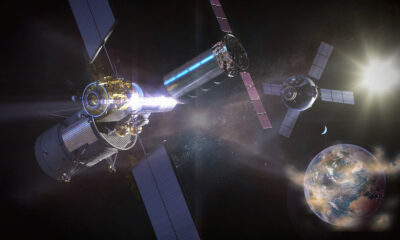Science
Scientists Unveil Mobile Atomic Clock That Keeps Time for 15 Billion Years

Scientists in Germany have introduced the world’s most precise mobile atomic clock, capable of losing only one second over the course of 15 billion years of continuous operation. Developed by researchers at the Physikalisch-Technische Bundesanstalt (PTB), Germany’s national metrology institute, this innovative optical strontium lattice clock is designed to be transportable, allowing for unprecedented accuracy in timekeeping across various locations.
The clock utilizes laser-cooled strontium atoms, chilled to just a few millionths of a degree above absolute zero. This extreme cooling is essential for maintaining the clock’s remarkable stability. An ultrahigh-vacuum chamber within the device ensures that these atoms remain unaffected by external disturbances, which could otherwise compromise their precision.
Advancements in Timekeeping Technology
The strontium atoms serve as the clock’s “pendulum,” oscillating at a stable frequency that allows for time measurement with exceptional accuracy. The research team explained, “Within the system’s core, strontium atoms, excited by laser light, glow blue with fluorescence.” This fluorescence is a key indicator of the atoms’ activity, which is meticulously guided through a cooled copper radiation shield to protect against any thermal radiation that could interfere with measurements.
The clock was first put into operation in 2023 and has since undergone extensive testing. Recent studies have reported a relative uncertainty of just 2.1 × 10−18, positioning this transportable clock among the most accurate ever created. Remarkably, it achieves its full precision in less than a day of operation, setting a new record for mobile setups.
Researchers emphasize that this technology could revolutionize fields such as geodesy—the science of measuring Earth’s shape and gravitational field. The tick rate of a clock is affected by gravity and altitude, making it instrumental for precise height measurements and mapping.
Implications for Science and Technology
The transportable nature of this optical atomic clock marks a significant shift in metrology. Traditionally, comparing the world’s most accurate clocks required complex fiber-optic networks or satellite systems. Now, this mobile solution can be brought directly to remote laboratories or measurement sites, streamlining inter-comparison processes and enhancing flexibility.
The researchers stated, “Beyond its value for metrology, it also enables chronometric geodesy at a previously unattainable level of accuracy.” This capability opens new avenues for scientific exploration and technological advancement, demonstrating the practical applications of quantum technology in everyday settings.
As the clock continues to be utilized in measurement campaigns across Europe, its implications for accuracy in various scientific fields are vast. The findings of this research have been published in the journal Quantum Science and Technology, underscoring the significance of these advancements in timekeeping.
In conclusion, the development of this mobile atomic clock not only exemplifies cutting-edge technology but also paves the way for future innovations in precise measurement and timekeeping.
-

 Technology5 months ago
Technology5 months agoDiscover the Top 10 Calorie Counting Apps of 2025
-

 Technology2 weeks ago
Technology2 weeks agoOpenAI to Implement Age Verification for ChatGPT by December 2025
-

 Health3 months ago
Health3 months agoBella Hadid Shares Health Update After Treatment for Lyme Disease
-

 Health3 months ago
Health3 months agoErin Bates Shares Recovery Update Following Sepsis Complications
-

 Health3 months ago
Health3 months agoAnalysts Project Stronger Growth for Apple’s iPhone 17 Lineup
-

 Technology4 months ago
Technology4 months agoDiscover How to Reverse Image Search Using ChatGPT Effortlessly
-

 Technology3 months ago
Technology3 months agoElectric Moto Influencer Surronster Arrested in Tijuana
-

 Technology2 months ago
Technology2 months agoDiscover 2025’s Top GPUs for Exceptional 4K Gaming Performance
-

 Technology5 months ago
Technology5 months agoMeta Initiates $60B AI Data Center Expansion, Starting in Ohio
-

 Technology5 months ago
Technology5 months agoRecovering a Suspended TikTok Account: A Step-by-Step Guide
-

 Health5 months ago
Health5 months agoTested: Rab Firewall Mountain Jacket Survives Harsh Conditions
-

 Lifestyle5 months ago
Lifestyle5 months agoBelton Family Reunites After Daughter Survives Hill Country Floods





















